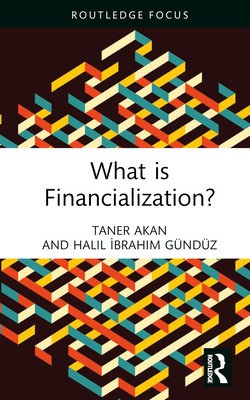
- Išsiųsime per 10–14 d.d.
- Autorius: Taner Akan
- Leidėjas: Routledge
- ISBN-10: 1032372656
- ISBN-13: 9781032372655
- Formatas: 14 x 21.6 x 0.6 cm, kieti viršeliai
- Kalba: Anglų
- Extra -15 % nuolaida šiai knygai su kodu: ENG15
Atsiliepimai
Aprašymas
This book introduces a new and original analytic approach to defining, understanding, and explaining financialization. It provides a precise and quantifiable definition of financialization, disaggregating financialization into its three varieties: financial development, economic growth, and income inequality. These are examined through the lens of financial development, both before and after the Great Recession, providing the most in-depth analysis of the finance-real economy-labor nexus. It provides a historical perspective, looking at financialization as a key dynamic that has shaped real economic structures in terms of both growth and inequality of income over the last four decades in high-income, upper-middle-income, and lower-middle-income countries. The book makes its multidisciplinary content readily accessible to non-economists by providing economics background information, and to economists by providing social-theoretical context. It will be essential reading for academics, researchers, analysts and students of economics, business, finance, sociology, politics and international relations. It will also serve as a vital resource for policy-makers and bureaucrats in determining, formulating, implementing, and revising policy alternatives to govern the pros and cons of financial development in terms of its effects on real output and income inequality.
EXTRA 15 % nuolaida su kodu: ENG15
Akcija baigiasi už 1d.12:22:14
Nuolaidos kodas galioja perkant nuo 10 €. Nuolaidos nesumuojamos.

- Autorius: Taner Akan
- Leidėjas: Routledge
- ISBN-10: 1032372656
- ISBN-13: 9781032372655
- Formatas: 14 x 21.6 x 0.6 cm, kieti viršeliai
- Kalba: Anglų
This book introduces a new and original analytic approach to defining, understanding, and explaining financialization. It provides a precise and quantifiable definition of financialization, disaggregating financialization into its three varieties: financial development, economic growth, and income inequality. These are examined through the lens of financial development, both before and after the Great Recession, providing the most in-depth analysis of the finance-real economy-labor nexus. It provides a historical perspective, looking at financialization as a key dynamic that has shaped real economic structures in terms of both growth and inequality of income over the last four decades in high-income, upper-middle-income, and lower-middle-income countries. The book makes its multidisciplinary content readily accessible to non-economists by providing economics background information, and to economists by providing social-theoretical context. It will be essential reading for academics, researchers, analysts and students of economics, business, finance, sociology, politics and international relations. It will also serve as a vital resource for policy-makers and bureaucrats in determining, formulating, implementing, and revising policy alternatives to govern the pros and cons of financial development in terms of its effects on real output and income inequality.




Atsiliepimai